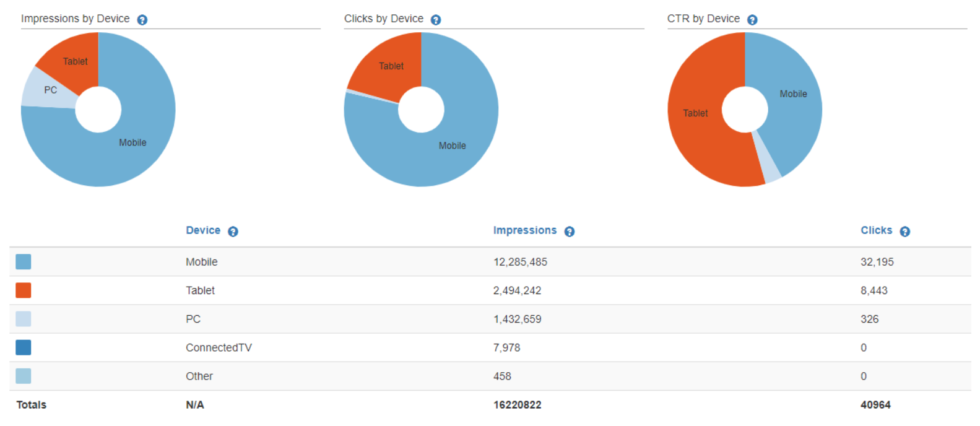Blog /
Mobile and Digital Advertising Targeting

How to Find Your Most Responsive Audience on Smartphones and Desktops
There has never been an advertising medium quite like mobile advertising that enables a brand to effectively target the right consumers, in the right place, at the right moment.
The tools available to target your audience on mobile and desktop are plentiful. Here’s an overview of how you can put your message in front of those consumers most likely to buy.
Targeting Strategies
Geo-Targeting
All of Purplegator’s client campaigns have some element of geo targeting at their core. It’s not often that our clients ask to advertise to everyone within a particular area or inside a geo-fence. The magic happens when we apply some filters in order to reach just the right people inside the designated area. This is what Purplegator does every single day for all of our clients. We deliver the right ads to the right people.
Demographics
Adding a demographic filter allows us to target specific age groups, income levels, education levels, and more. We are using filters such as these now to reach low-income, at-risk young mothers whose children would benefit from an early childhood education program. When we placed ads for another client, we targeted ages 16-24 and excluded college students and high school graduates, for example. Their programs were specifically for at-risk young adults ages 16-24 who were not in school and not working. Facebook and Instagram recently announced reduced interest targeting for youth under the age of 18, limiting advertisers now to only age, gender and location. So, aspirational imagery becomes all the more important – if advertising to young people, be sure to show similar young people in the ads.
Behavioral
Behavioral targeting analyzes past behavior, so we’ve found this targeting to work best for retail or service provider advertisers. Our client who operates a haunted attraction targets people who have recently made a purchase at a costume shop or who have rented a scary movie — true Halloween fans.
Behavioral targeting, along with contextual targeting, will become more popular and powerful as new policies regarding cookies and other privacy measures are rolled out across the various platforms. This is one of the overarching algorithm changes we are closely monitoring across multiple platforms.
Contextual
Whereas behavioral targeting analyzes past behavior, contextual targeting, also known as “native advertising,” focuses on current behavior. If a person is watching a video about casinos, an ad about problem gambling can appear. There’s really no risk of irrelevance as your ads will appear alongside content that the user has consciously chosen to consume. Another benefit of contextual ads is that there is no reliance on third-party cookies either, and no danger of ad fatigue as the viewer is only shown the ad in the proper context. The ad doesn’t follow him or her around the web.
Retargeting
Retargeting works by adding a pixel to a website. This pixel captures data about the people who visit the website and what they do on the website. The data is used to create audiences based on those interactions, and the audiences are then targeted through paid Google display or social media ads.
Look-alike Modeling
Purplegator will work closely with you to develop lookalike audiences to reach people who are similar (in demographic, online activity, and preferences) to your desired audience. These audiences increase the probability of generating high-quality leads by appealing to consumers similar to those who have already invested in a product or taken a similar desired action. Each ad platform has options to expand the target group to create lookalikes. Some offer the option of uploading a list as a baseline from which to build the lookalike audience. Purplegator often uses lookalike audiences to help clients expand their reach.
IP Targeting
Purplegator deploys both IP Targeting and Device ID Targeting to reach people.
IP targeting is a cookie-free way of reaching a consumer by matching their physical address with an IP address. Purplegator leverages third-party matching data to help clients identify direct return on investment (ROI). The proprietary matching of a physical address to an IP address allows our client to reach a target audience on a one-to-one basis. This one-to-one matching gives the client a unique ability to monitor return on ad spend and more by matching those who were targeted with those who made actual purchases or those who signed up for a service.
Purplegator has found great success using Device ID. We are able to capture the Device ID wherever our target audience is- with their device. It’s not necessary for us to have their home address in order to capture the Device ID.
Device IDs are unique identifiers that are attributed to each individual smart device. Your smart device literally has its own unique code. In the sense of how you have your own unique fingerprint, your phone has its own set of digits to set it aside from all other smart devices.
Device IDs (“MAIDs” or Mobile Advertising ID) are obtained by our system when a device is identified as being within a specified location. Once identified and procured, we can then serve ads to those Device IDs wherever they are. Furthermore, we can track the Device back to its home and then deliver ads to other devices in that home. With the addition of a list of physical addresses, we can then do an Address Match Back to confirm devices in those specific addresses.
NOTE: This data is all hash and encrypted for security.
- Location Targeting (closest to traditional geo-fencing):, a hand-drawn polygon on specific, relevant locations or buildings as recent as 3 days ago and as far back as 12 months.
- ZIP Code Targeting: We use this to target neighborhoods, a radius around a store, and larger areas.
- Device ID Demo and Interest Targeting: Advertise to devices for desirable demographics or devices that engage in specific interests or activities.
- Residential Address Match Targeting: This is a solid solution to reach any database of residential addresses, like your existing lists, or a purchased list of residents.
- Lookalike Targeting: This helps expand reach based on similarities in demographic, location, and behavioral characteristics.
- Social Extension Targeting: These audiences are built from devices that are observed frequently together. For example, devices that meet at the same office location, gym, coffee shop, or outdoor park.
We use Device ID in many of our campaigns. Our retail clients use Device ID to capture the IDs of people who were shopping at a competing business. Then, those mobile devices were targeted with ads for our client’s retail store.
We also use Device ID in many of our recruiting campaigns. Our truck driver recruitment clients have all used this to capture Device IDs of drivers who are sitting in other trucking yards or delivery locations. We are then able to deliver ads to those devices wherever they are – at home, at the gym, or at a coffee shop.
Display Ads
Almost all of Purplegator campaigns have a display ad element to them as they are terrific for branding and can drive conversions. Some display campaigns run only on the Google Ad Network, while others run on the Mobile Web and in Mobile Apps via our DSP partner. And, with UTM codes and conversion pixels, we are able to show attribution and conversions as the banner ads send viewers to the destination website page or landing page.
We recommend all display ads be provided in the 5 most popular sizes so that they fit the available inventory of the publishers:
728 x 90 pixels
300 x 50 pixels
300 x 250 pixels
320 x 250 pixels
160 x 600 pixels
In-stream Digital Video
YouTube may be the biggest, but it’s not the only platform we run In-Stream Digital Video. We can also include other video services such as
- Vimeo
- Metacafe
- Dailymotion
- Utreon
- The Internet Archive
- Crackle
Facebook also offers In-Stream Digital Video ads: Facebook in-stream video allows you to deliver video ads to people watching videos on Facebook from familiar publishers and digital-first creators. Your ads can also appear in Facebook Live streams from a select group of approved gaming, entertainment and sports partners. These ads only appear on mobile devices and only after 60 seconds of the main video content.
We recently used a good mix up of In Stream Video for our workforce development clients. We had 15 second and 30 second videos that ran on many different platforms. Their view rates were strong at 52.66% thanks to stellar geo targeting.
Desktop, Tablet, Mobile — Browser & In-App
As previously mentioned, Purplegator campaigns are designed to reach our clients’ targeted audience no matter what device they are using. Our reporting tools show what devices were used when an ad was delivered.


About the Author
Bob Bentz is president of mobile-first marketing agency, Purplegator. He is also the author of Relevance Raises Response: How to Engage and Acquire with Mobile Marketing. Bentz is an adjunct professor at West Virginia University. He hopes to show up in the same lookalike audience with Brad Pitt or Tom Cruise, but it has not happened yet.









